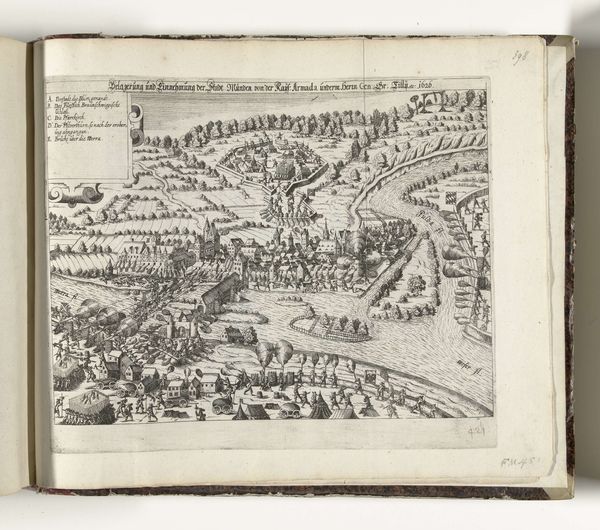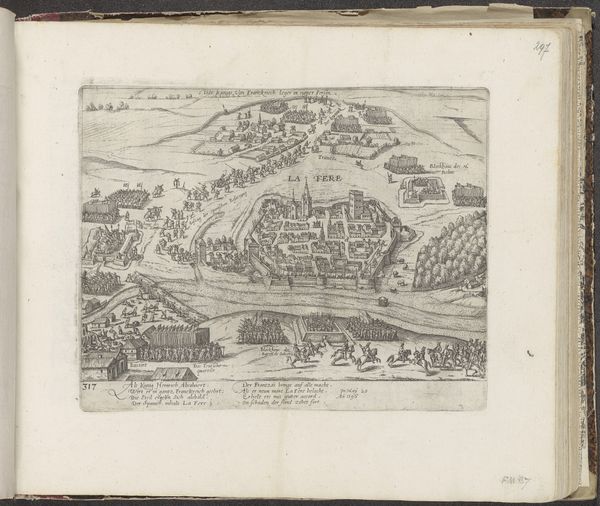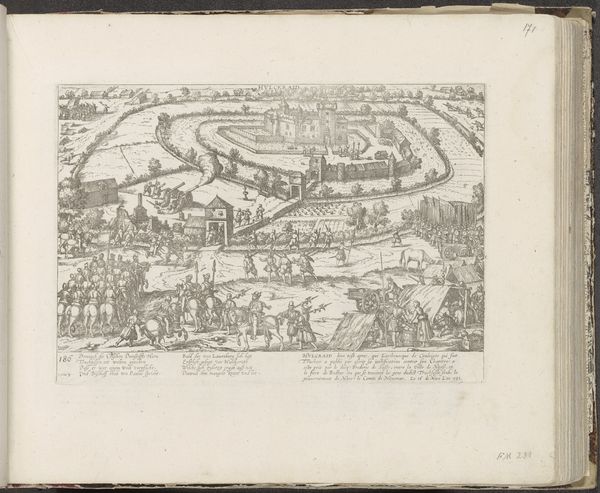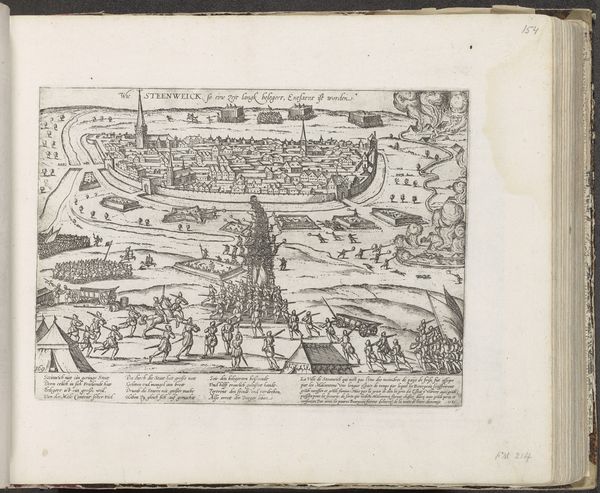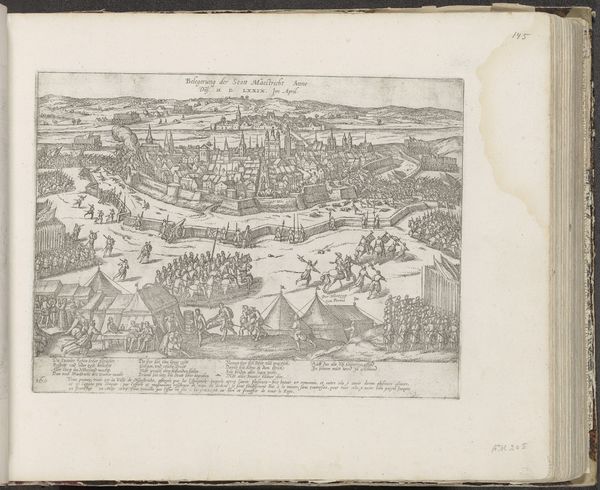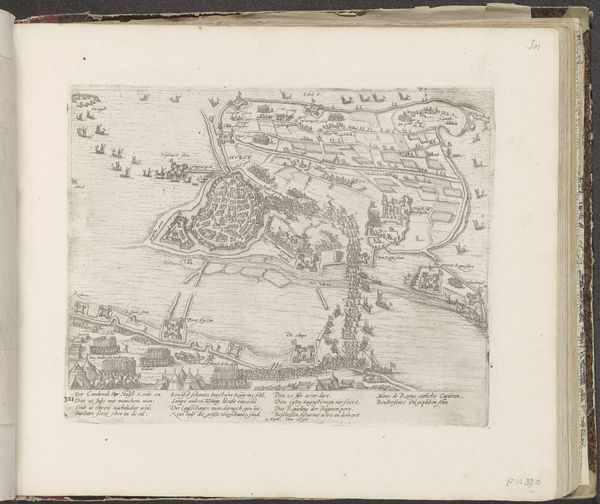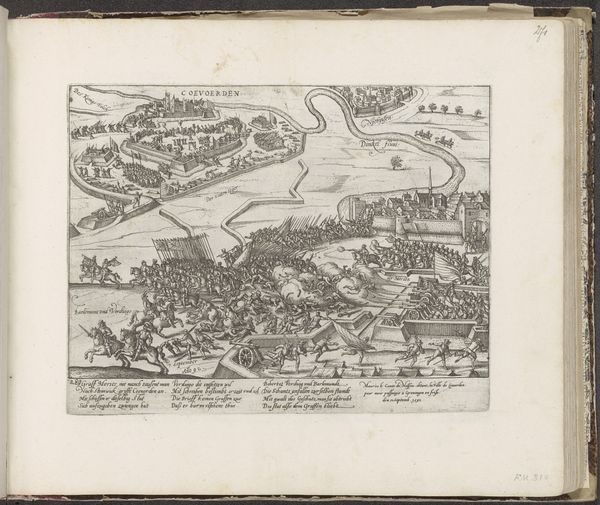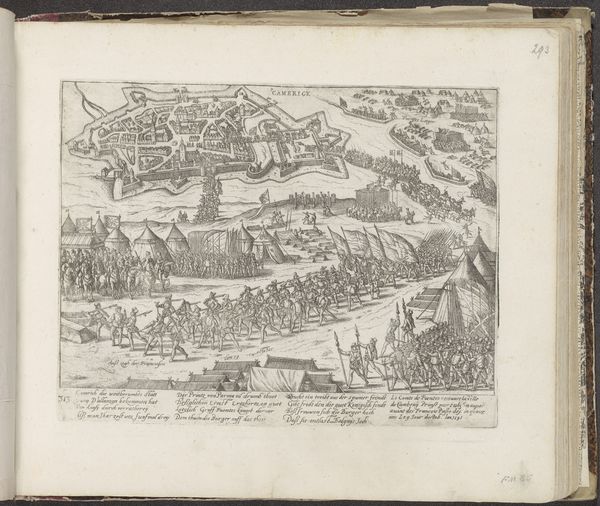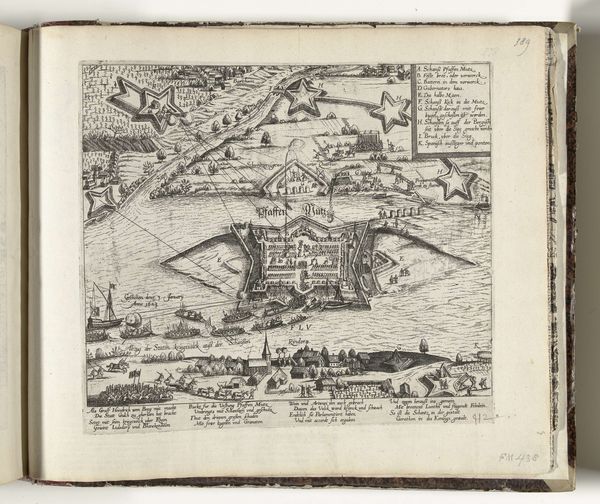
print, engraving
#
dutch-golden-age
# print
#
landscape
#
cityscape
#
engraving
Dimensions: height 230 mm, width 307 mm
Copyright: Rijks Museum: Open Domain
Curator: Immediately striking! There’s a starkness in this Dutch Golden Age cityscape. "Gezicht op Pernambuco, 1630", or "View of Pernambuco, 1630", by Frans Hogenberg. The print utilizes engraving to portray this Brazilian city. It’s currently held at the Rijksmuseum. What’s grabbing you? Editor: The etching is intricate; I can practically feel the paper. All those tiny lines give form to ships and fortifications. Considering the colonial context, what kind of material exchange does it signify, both economically and culturally? Curator: Absolutely, its materiality underscores the larger narrative of Dutch colonial ambition. It offers a perspective that needs deconstructing through a lens of postcolonial theory and critical race studies. Who benefits from this “view”, and how does it solidify power dynamics? Editor: We're observing the world being flattened, almost industrialized, via labor intensive etching work – a process itself echoing extraction of resources. You know, consider the copper used for the engraving plates – where did it come from, how was it mined? Curator: And by focusing our critical attention on these methods of production we see the hidden aspects of cultural encounter, and the power dynamics at play that are often concealed. Editor: The technique is designed to project power, yes, but it simultaneously records a kind of intense engagement with landscape and its conversion into a commodified product. Even the "art" functions in this exchange. Curator: Precisely! Think how gender and race play into who is seen, or rather, *not* seen, in this 'objective' cityscape. Whose stories and bodies are purposefully erased by this colonial gaze, even within the detailed materiality? Editor: I find the level of detail compelling – almost an obsessive need to quantify, chart, and dominate through visual means and tangible materials. But at what human cost to execute? The engravers, the labor… Curator: The print invites critical reflection on whose perspective it really embodies. Who had the power to make it? How can we amplify the narratives marginalized or altogether missing from Hogenberg's view? Editor: Indeed, that’s how it gains renewed significance. Thank you for untangling those connections. I see the value inherent within in its production far beyond the representational facade. Curator: Of course. Through understanding the production process in relation to its content, we gain richer awareness of its time. Editor: Yes. Analyzing the intersectionality embedded reveals more comprehensive insight into these social structures.
Comments
No comments
Be the first to comment and join the conversation on the ultimate creative platform.
